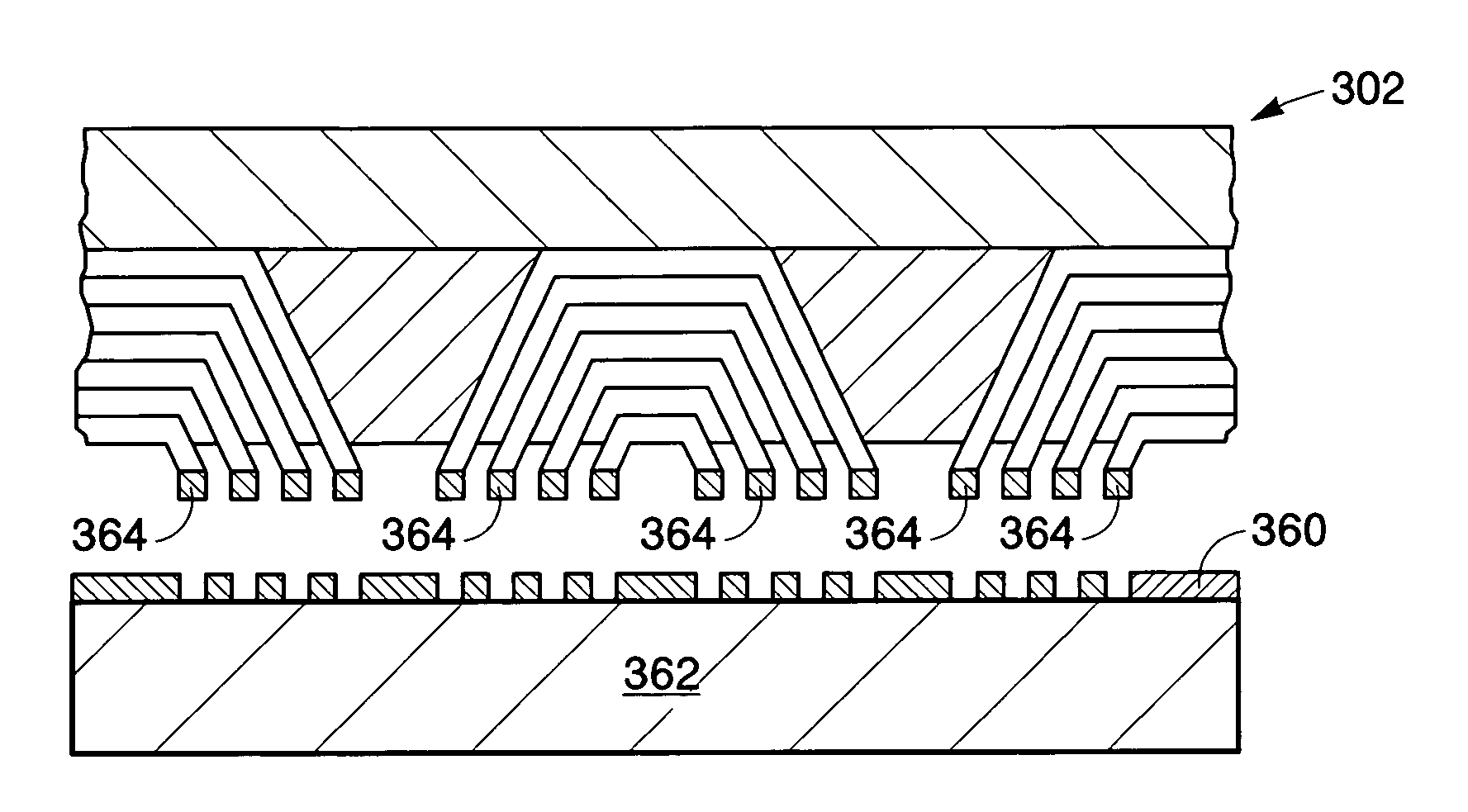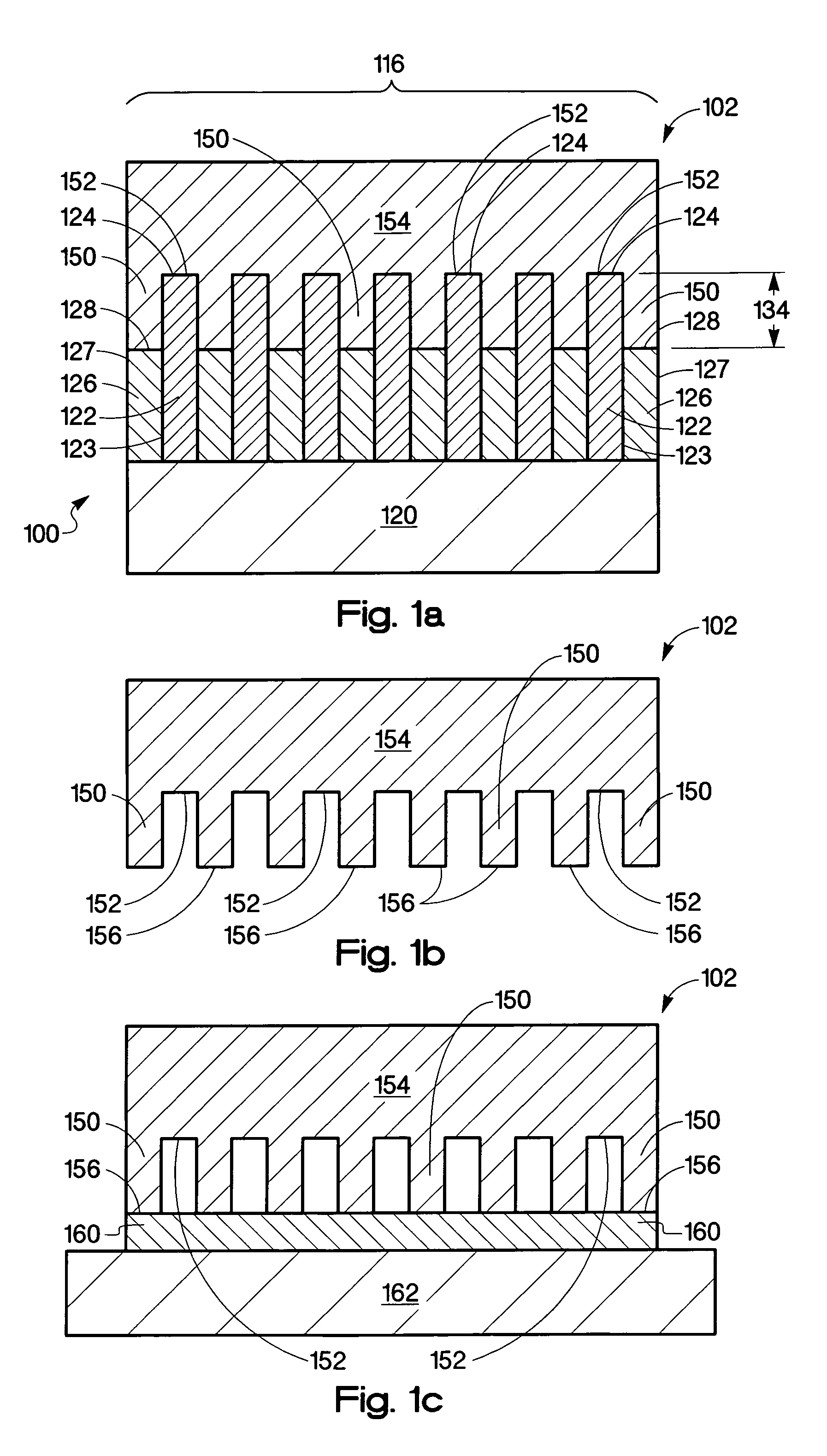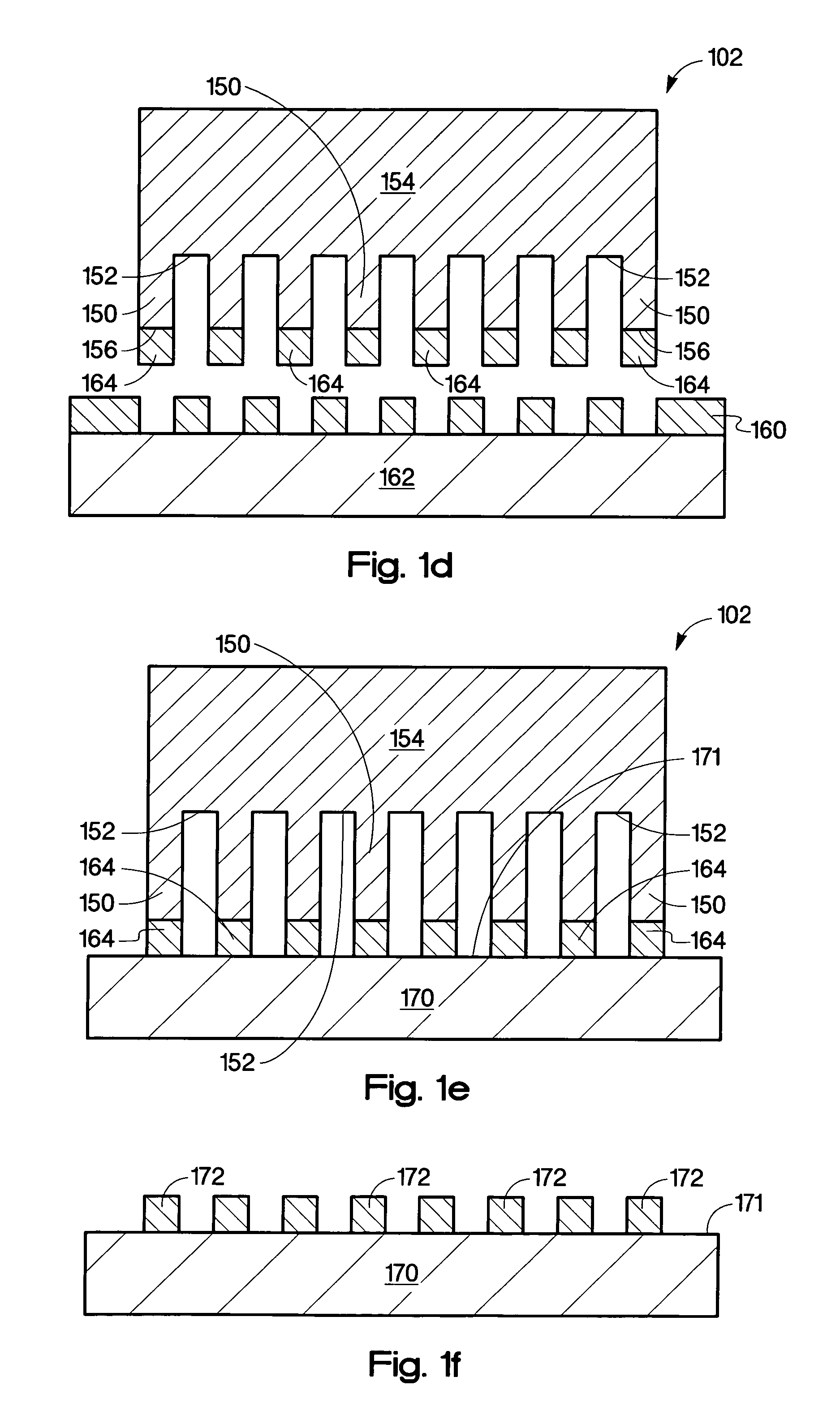Method of utilizing a contact printing stamp
a technology of contact printing and stamps, applied in the direction of printing press parts, yarn, transportation and packaging, etc., can solve the problems of corresponding decrease in the feature size of integrated circuit devices, continued decrease in the feature size of integrated circuits, and approaching a limi
- Summary
- Abstract
- Description
- Claims
- Application Information
AI Technical Summary
Benefits of technology
Problems solved by technology
Method used
Image
Examples
Embodiment Construction
[0023]This invention is directed to utilizing a contact printing stamp created using multilayer thin film structures, sometimes referred to as superlattices, to act as the template, mold, or some combination thereof in forming the stamp. Typically, the present invention utilizes alternating layers of two dissimilar materials having differing etching or removal rates to form the master mold surfaces for generating the protrusions and indentations of the contact printing stamp. In addition, multiple materials may be utilized in the multilayer thin film structure to generate even more complex template structures. The contact printing stamp of the present invention may be fabricated by a variety of techniques and materials. The present invention enables a reduction in the characteristic feature size formed in the contact printing stamp from approximately 80 nanometers to 2 or 3 nanometers or even lower. The present invention also allows for larger features, up to microns in characterist...
PUM
 Login to View More
Login to View More Abstract
Description
Claims
Application Information
 Login to View More
Login to View More - R&D
- Intellectual Property
- Life Sciences
- Materials
- Tech Scout
- Unparalleled Data Quality
- Higher Quality Content
- 60% Fewer Hallucinations
Browse by: Latest US Patents, China's latest patents, Technical Efficacy Thesaurus, Application Domain, Technology Topic, Popular Technical Reports.
© 2025 PatSnap. All rights reserved.Legal|Privacy policy|Modern Slavery Act Transparency Statement|Sitemap|About US| Contact US: help@patsnap.com



